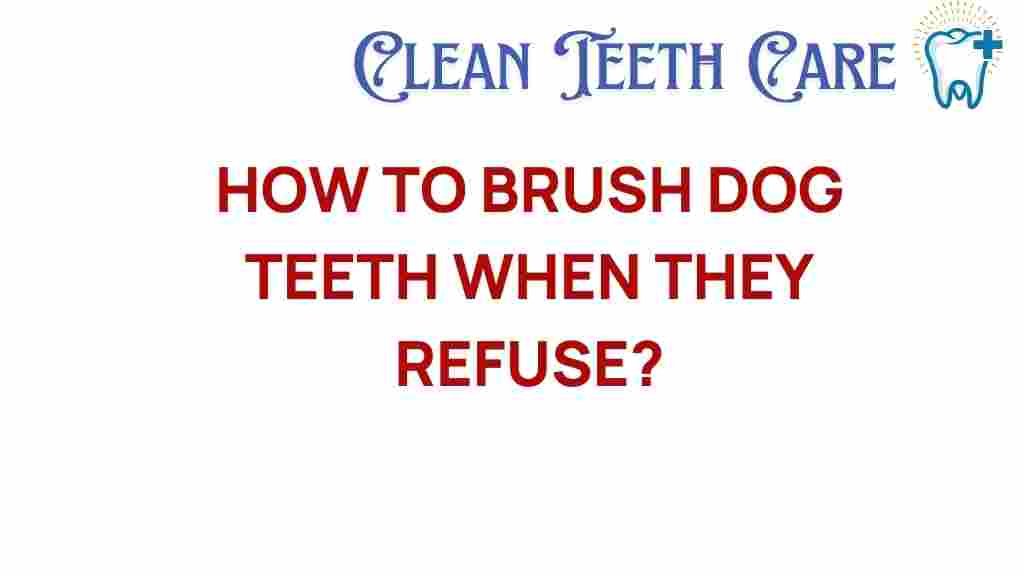Unleashing the Secrets: How to Brush Dog Teeth When They Refuse – Dog Dental Care
As a pet owner, ensuring your furry friend maintains optimal canine dental health is crucial. Just like humans, dogs need regular dental care to prevent issues like plaque buildup, gum disease, and bad breath. However, for many pet owners, the task of brushing dog teeth can be challenging, especially when your dog refuses to cooperate. In this article, we’ll explore effective strategies for maintaining your dog’s pet hygiene, overcoming resistance to brushing, and recommending products that can ease the process.
The Importance of Dog Dental Care
Proper dog dental care is essential for your pet’s overall health. Dental diseases can lead to serious health issues, including heart, liver, and kidney problems. Regular brushing can help mitigate these risks. Here are some key benefits of maintaining your dog’s dental hygiene:
- Prevents plaque and tartar buildup.
- Reduces the risk of gum disease.
- Decreases bad breath.
- Promotes better overall health.
- Can save money on veterinary bills related to dental issues.
Step-by-Step Process for Brushing Dog Teeth
Brushing your dog’s teeth doesn’t have to be a battle. By following a clear, step-by-step process, you can make it a more positive experience for both you and your pet.
1. Gather Your Supplies
Before you begin, make sure you have the right dental products:
- Dog Toothbrush: Choose a toothbrush designed specifically for dogs, which usually has softer bristles and a shape that accommodates their mouths.
- Dog Toothpaste: Never use human toothpaste, as it can be harmful to dogs. Look for toothpaste formulated for pets.
- Dental Chews: These can be excellent supplementary tools for maintaining canine dental health.
- Rewards: Treats or praise can help motivate your dog during the brushing process.
2. Get Your Dog Comfortable
Before attempting to brush your dog’s teeth, ensure they are relaxed. Here are some tips to help:
- Choose a quiet environment free from distractions.
- Let your dog sniff the toothbrush and toothpaste first.
- Spend a few minutes petting and calming your dog before the process.
3. Introduce the Toothbrush Gradually
Instead of jumping straight to brushing, allow your dog to get used to the idea:
- Start by gently rubbing your finger along your dog’s gums and teeth to acclimate them to the sensation.
- Next, introduce the toothbrush without any toothpaste, allowing them to chew on it for a few moments.
4. Brushing Technique
Once your dog seems comfortable, you can begin brushing:
- Apply a small amount of dog toothpaste to the toothbrush.
- Lift your dog’s lip to expose their teeth.
- Using gentle circular motions, brush the outer surfaces of the teeth. Focus on the back teeth and gumline where plaque tends to accumulate.
- Brush for about 30 seconds to one minute, depending on your dog’s tolerance.
- Reward your dog for their cooperation once you finish!
5. Regular Routine
Consistency is key in dog dental care. Aim to brush your dog’s teeth at least two to three times per week, if not daily. Establishing a routine will help your dog accept this necessary part of their hygiene.
Troubleshooting Tips for Dog Behavior
Not all dogs will take to tooth brushing easily. Here are some common challenges and solutions:
1. Dog Refuses to Open Mouth
If your dog resists having their mouth opened, try the following:
- Use treats to encourage them to open their mouth.
- Practice lifting their lip without brushing to get them accustomed to the sensation.
2. Aggressive Behavior
If your dog shows signs of aggression or anxiety, consider these approaches:
- Take a step back and allow them to adjust to the toothbrush without any pressure.
- Use a softer brush or your finger to start the process.
- Consider consulting a professional dog trainer for additional tips.
3. Lack of Interest
If your dog seems disinterested in brushing, try:
- Using flavored dog toothpaste to make it more appealing.
- Incorporating brushing into playtime or rewarding them with their favorite toy afterward.
Veterinary Tips for Enhanced Dental Care
Your veterinarian can be an invaluable resource for maintaining your dog’s dental health. Here are some tips and recommendations:
- Schedule regular dental check-ups to identify any potential issues early on.
- Ask your vet about professional cleanings, which may be needed annually or bi-annually, depending on your dog’s needs.
- Discuss dental products, such as rinses or chews, that can aid in oral hygiene.
Recommended Dental Products
Choosing the right dental products can significantly improve your dog’s dental care routine. Here are some highly recommended options:
- Pearl Dog Toothpaste: This toothpaste is known for its tasty flavors and effectiveness in combating plaque.
- Pet Smile Toothbrush: Designed specifically for pets, this toothbrush features soft bristles and an ergonomic shape.
- Greenies Dental Chews: These chews not only freshen breath but also help reduce tartar buildup.
Conclusion
Brushing your dog’s teeth is an essential part of pet hygiene that contributes significantly to their overall well-being. By understanding your dog’s behavior and following the steps outlined in this article, you can make the process smoother and more effective. Remember, patience and consistency are key. If you encounter persistent challenges, don’t hesitate to seek professional help. With the right approach, you can ensure your furry friend enjoys a healthy smile for years to come.
For more tips on dog training and veterinary tips, check out our training resource page or visit the American Veterinary Medical Association for additional insights.
This article is in the category Hygiene and created by CleanTeethCare Team
